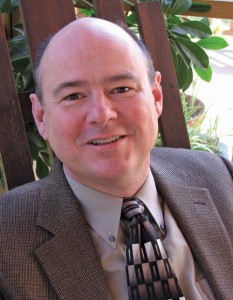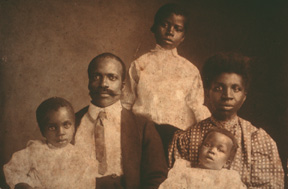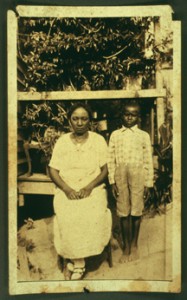In the heart of campus is a building that contains 20 centuries worth of history and culture, from ancient papyri to the records of modern advertising agencies. Its holdings number more than 350,000 printed volumes and 20 million items in manuscript and archival collections. Now Duke’s Rare Book, Manuscript, and Special Collections Library has a new name. Soon it will have a new home.

A Transformative Gift
A great library is one of the purest expressions of a university’s spirit. It’s where the transfer of knowledge from one generation to the next never ceases. Once in a while, the next generation transfers something back.
Earlier this year, Duke University trustee David M. Rubenstein announced that he would give $13.6 million to the Duke University Libraries. It is the largest donation the Libraries have ever received. In recognition of this extraordinary gift, Duke’s Board of Trustees approved a measure to rename the special collections library in Rubenstein’s honor. The David M. Rubenstein Rare Book & Manuscript Library was welcomed as the newest point of pride on campus.
“Nationally, David Rubenstein has been a strong supporter of libraries and archives, and of the way the preserved past can increase present understanding,” said President Richard H. Brodhead. “We at Duke are grateful for this magnificent gift, which will ensure access to documents that are part of our shared intellectual and cultural heritage.”
The Rubenstein Rare Book & Manuscript Library, housed in the original West Campus library building, is scheduled to be renovated in the final phase of the Perkins Project, a multi-year library renovation project that began a decade ago. The renovation will transform one of the oldest and most recognizable buildings on West Campus into a state-of-the-art research facility where students, faculty, and visitors can engage with the Libraries’ collection of rare and unique scholarly materials.
The Perkins Project began with the construction of Bostock Library and the von der Heyden Pavilion, both completed in 2005, followed by the renovation of Perkins Library between 2006 and 2008. The final phase is slated to begin late in 2012 and will focus on the original 1928 West Campus library building and its 1948 addition (including the iconic Gothic Reading Room and Mary Duke Biddle Rare Book Room), which together comprise the new Rubenstein Library.
This portion of the main university library complex is at the very heart of the Gothic campus designed by the Horace Trumbauer architectural firm. The cornerstone for the university is visible at the foot of the library tower. Situated at the intersection of the West Campus quadrangles, it is easily accessible to scholars, students, and visitors.
“Libraries are at the heart of any great educational institution,” said Rubenstein. “This renovation and modernization program will help ensure that the Rare Book and Manuscript Library’s priceless collection is preserved and accessible to scholars and the public for decades to come.
“When I was a student at Duke I worked at the library, so this gift also reflects my appreciation for that opportunity and the important role it played in my academic experience,” Rubenstein added.
A Baltimore native, Rubenstein is co-founder and managing director of The Carlyle Group, a global alternative asset manager. He graduated magna cum laude from Duke in 1970 and serves as vice chair of the university’s Board of Trustees. He and his wife, Alice Rogoff Rubenstein, have three grown children.
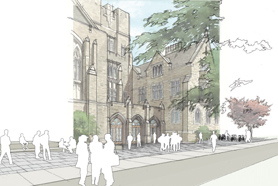
Rubenstein’s appreciation for historical documents is well known, as is his support for the libraries, museums, archives, and other cultural institutions that preserve them. In 2007, he purchased the last privately owned copy of the Magna Carta and placed it on permanent loan to the National Archives in Washington D.C., so that the public could view the document. He has also bought of a copy of the 1863 Emancipation Proclamation, signed by Abraham Lincoln, which he loaned to the White House. (It now hangs in the Oval Office.) And earlier this year, Rubenstein purchased the first map printed in North America, depicting the boundaries of the new American nation and showing the “Stars and Stripes” for the first time, and likewise loaned it to the Library of Congress.
“The Rubenstein Library will be a distinguished, enduring institution that will collect, protect and make accessible rare and unique documents, satisfy intellectual curiosity, stimulate learning and facilitate the creation of new scholarship,” said Deborah Jakubs, the Rita DiGiallonardo Holloway University Librarian and vice provost for library affairs. “David Rubenstein’s generosity enables us to create the kind of home for special collections that Duke deserves, designed with the students and scholars of today and tomorrow in mind. Researchers well beyond our campus will also benefit from this gift.”
A Place of Exploration and Discovery
Duke’s collections are open to everyone—students, scholars, and those with a curiosity about the past. Roughly 40 percent of the Rubenstein Library’s registered researchers every year are Duke undergraduates, and another 50 percent are visiting scholars from across the country and around the globe. If you earn a master’s or doctorate degree from Duke, one of the last items on your graduation checklist is depositing your thesis or dissertation in the University Archives—part of the Rubenstein Library.
In addition to the University Archives, the Rubenstein Library is home to several specialized research centers, each one representing a collecting area of particular breadth and depth. These include the Sallie Bingham Center for Women’s History and Culture; the John Hope Franklin Research Center for African and African American History and Culture; the John W. Hartman Center for Sales, Advertising & Marketing History; the Archive of Documentary Arts; the Human Rights Archive; and the History of Medicine Collections.
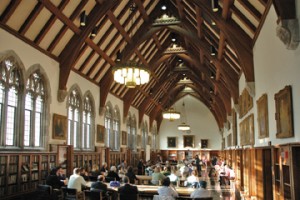
There are also individual collections of note. For instance, did you know that Duke boasts one of the top three collections of Walt Whitman manuscripts and publications in the world (along with the Library of Congress and the New York Public Library)? Or that no one has a better collection on the history of modern economic thought, including the personal papers of nine Nobel Prize winners?
All of these materials have one thing in common—they are the real deal, the primary sources of knowledge and history. In this age of digitization and e-books, it is still possible to see a 500-year-old copy of the Nuremberg Chronicle up-close and in person, or hold in your hands a fragile letter written by an African American slave.
That kind of face-to-face encounter with original documents and artifacts is what real-world research is all about. Every year, scholars from Duke and other institutions use the Rubenstein Library’s rich holdings to write new histories, explore significant lives, study ecological change, trace the evolution of texts, understand cultural shifts, and create new art and literature. In the process, they advance the frontiers of knowledge and increase our appreciation for the range of human experience.
A Crowning Finish
Such inspiring work deserves an equally inspiring setting. The upcoming renovation will increase the research, instruction, storage, and exhibition capabilities of the Rubenstein Library. It will also address the need for state-of-the-art stacks with high-tech security and a closely-monitored environment.
The original stacks were built for standard-size books, not the oversized folios and oddly shaped artifacts that are frequently found in special collections libraries. The stack levels are also cramped, not up to current fire and safety codes, and navigable only by vintage 1920s and 1940s elevators.
During the renovation, the entire stack core will be removed—from basement level to roof—and replaced with a new floor structure that will support high-density shelving. It will be an engineering feat unlike anything seen on campus. To accomplish it, the Libraries are working with architectural firm Shepley Bulfinch, who also designed the much-loved Bostock Library and von der Heyden Pavilion, as well as the highly successful renovation of Perkins Library.
The new special collections reading room will accommodate more people than the current space, and it will offer researchers more elbow-room per person. There will also be designated spaces for collaborative research.
Updates will also extend to the Mary Duke Biddle Rare Book Room and the Gothic Reading Room. The charm and character of these signature Duke spaces will be preserved, but their finishes, furnishings, lighting, technology infrastructure, and exhibition facilities will be enhanced.

Finally, the library’s main entrance will be redesigned with new doors, windows, and lighting to give the entire library complex a more unified and welcoming presence on the historic West Quad.
Construction work is expected to begin in late 2012 and continue for several years. In the meantime, library staff are developing plans to relocate materials, services, and personnel to the third floor of Perkins Library, which will become the Rubenstein Library’s temporary home during the renovation. The plan will be implemented in phases so that library operations and services can be maintained throughout the project and researchers can continue to work with special collections materials.
“The Cornerstone Phase of the Perkins Project will bring the Rubenstein Library’s rich collections to centerstage,” said Naomi Nelson, director of the Rubenstein Library. “Our transformed spaces will welcome visitors, students, and scholars to engage with history and the arts through interactive exhibitions, specialized classrooms, and a variety of research settings. In our new event spaces, the Duke community and wider public will come together to discuss and debate how our understanding of the past shapes our vision for the future. The Rubenstein Library will be a new focal point on campus for inquiry and innovation.”
When the renovation is complete, the Rubenstein Rare Book & Manuscript Library will provide a striking culmination to the Perkins Project. It also promises to become one of the crown jewels of Duke, a splendid symbol of the adventurous and creative life of the mind.
At their best, libraries inspire, inform, and educate. The re-envisioned and re-invigorated Rubenstein Library will be the intellectual center Duke deserves, one that can match the lofty aspirations of a university that wants to change the world.
See also:
Timeline of the Perkins Project


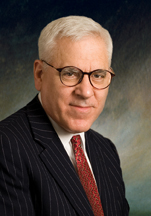 David M. Rubenstein is co-founder and managing director of The Carlyle Group, a global alternative asset manager. He co-founded the firm in 1987. Since then, Carlyle has grown into a firm managing more than $150 billion from 36 offices around the world.
David M. Rubenstein is co-founder and managing director of The Carlyle Group, a global alternative asset manager. He co-founded the firm in 1987. Since then, Carlyle has grown into a firm managing more than $150 billion from 36 offices around the world.





